Abstract
Three strains of Enterobacter were studied for their response to ampicillin. They exhibited a basic level of resistance that depended on the medium used and high-level mutational resistance at a frequency of 10(-5) to 10(-7). Two classes of mutants were selected, one of which showed markedly enhanced antibiotic inactivation as indicated by a biological assay and the other of which resembled the wild type in this regard. Both mutants showed cross-resistance to other beta-lactam antibiotics. The results explained discrepancies between traditional broth dilution minimum inhibitory concentration tests and early read automated procedures.
Full text
PDF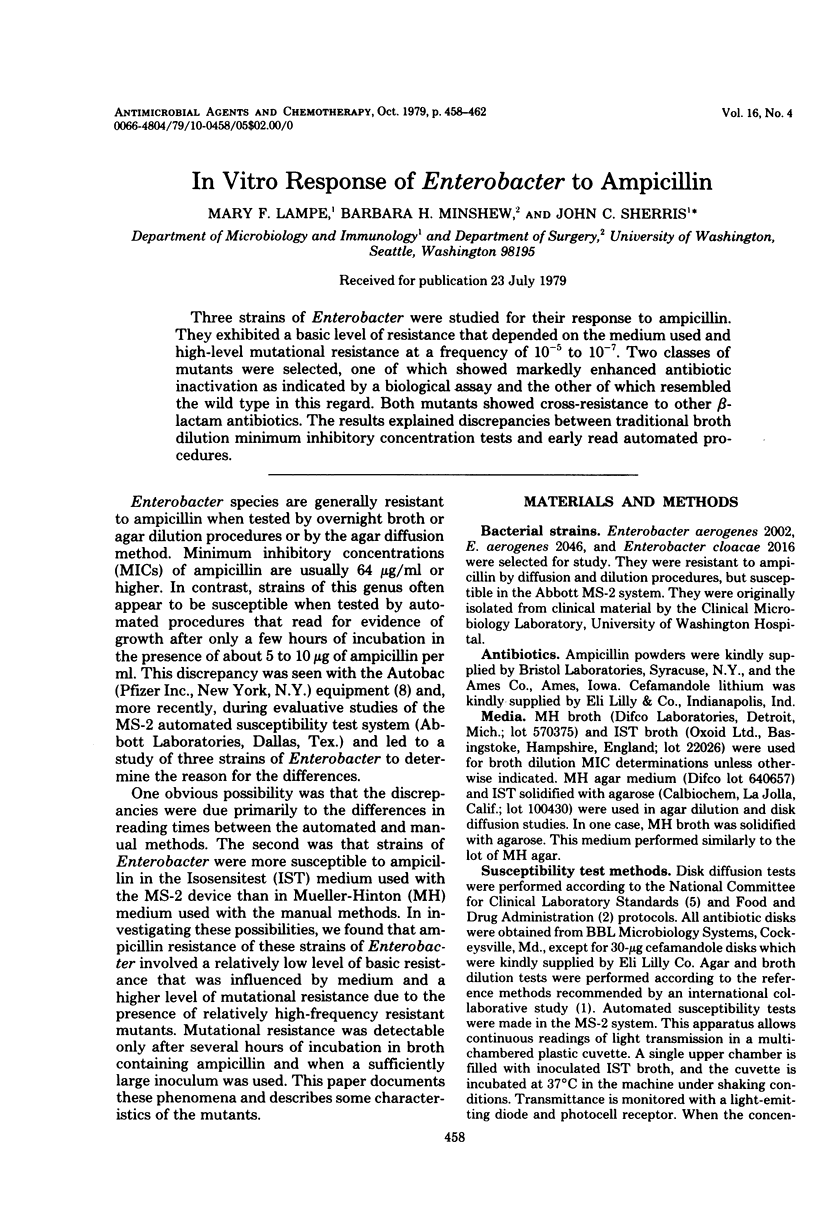
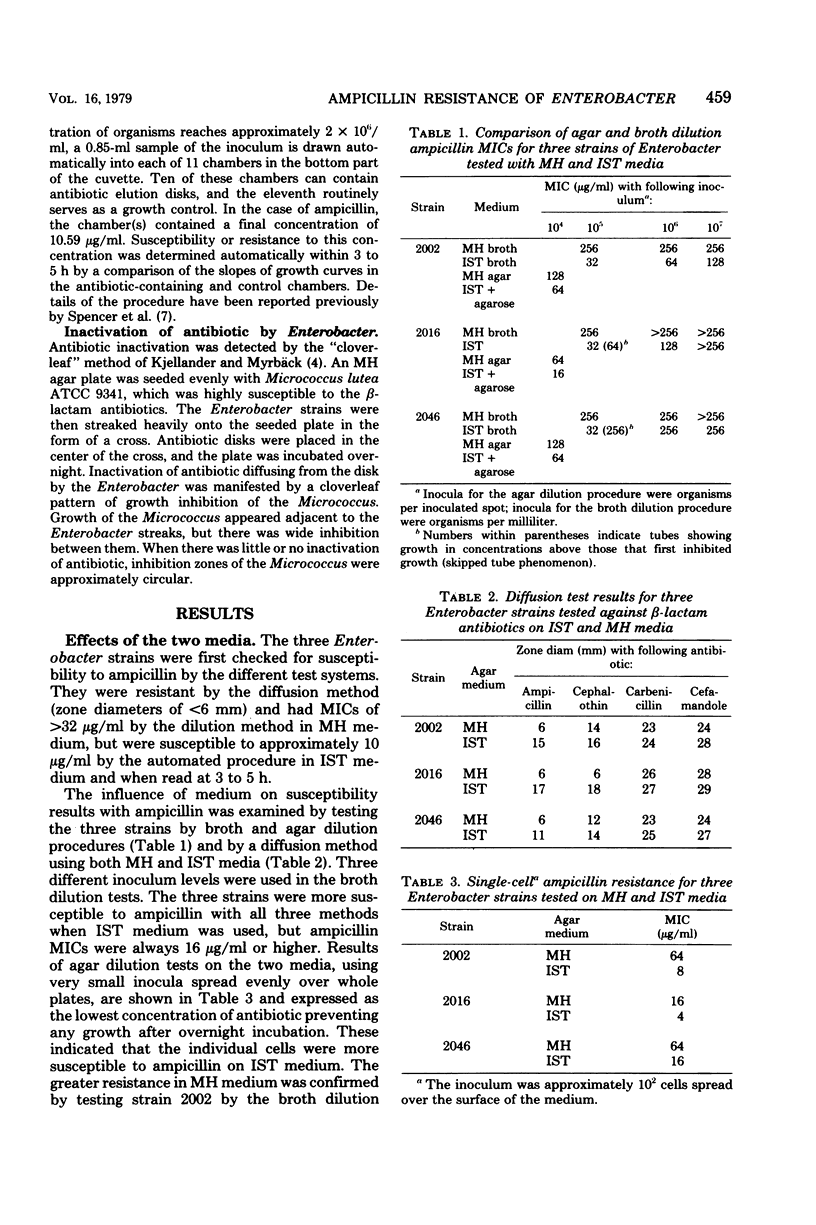
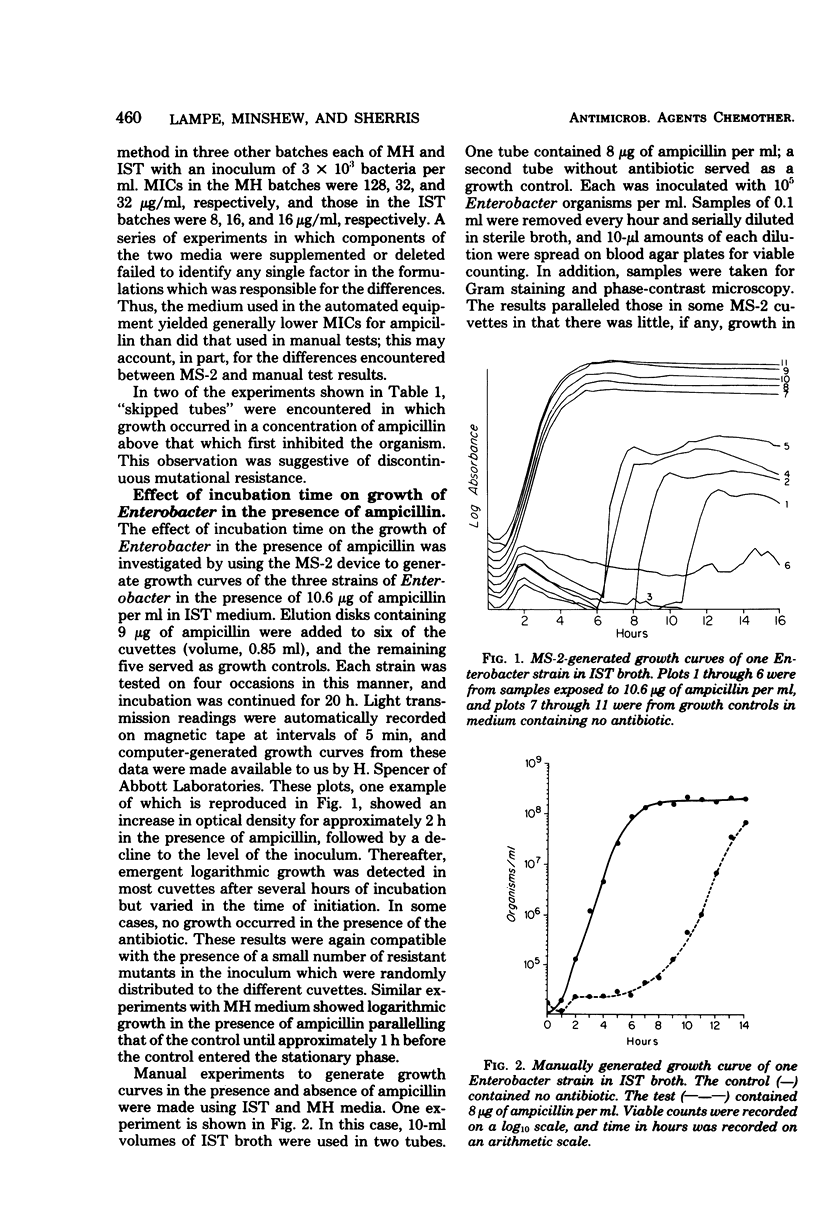
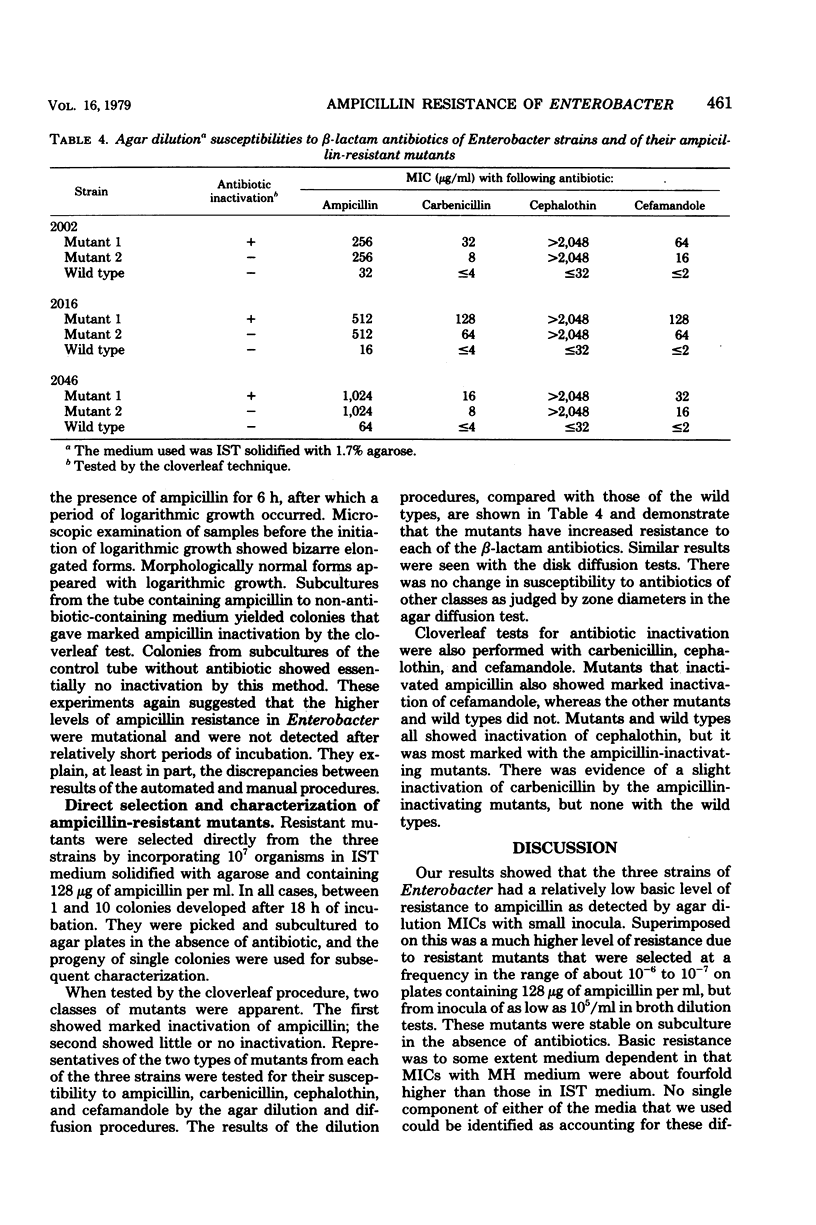
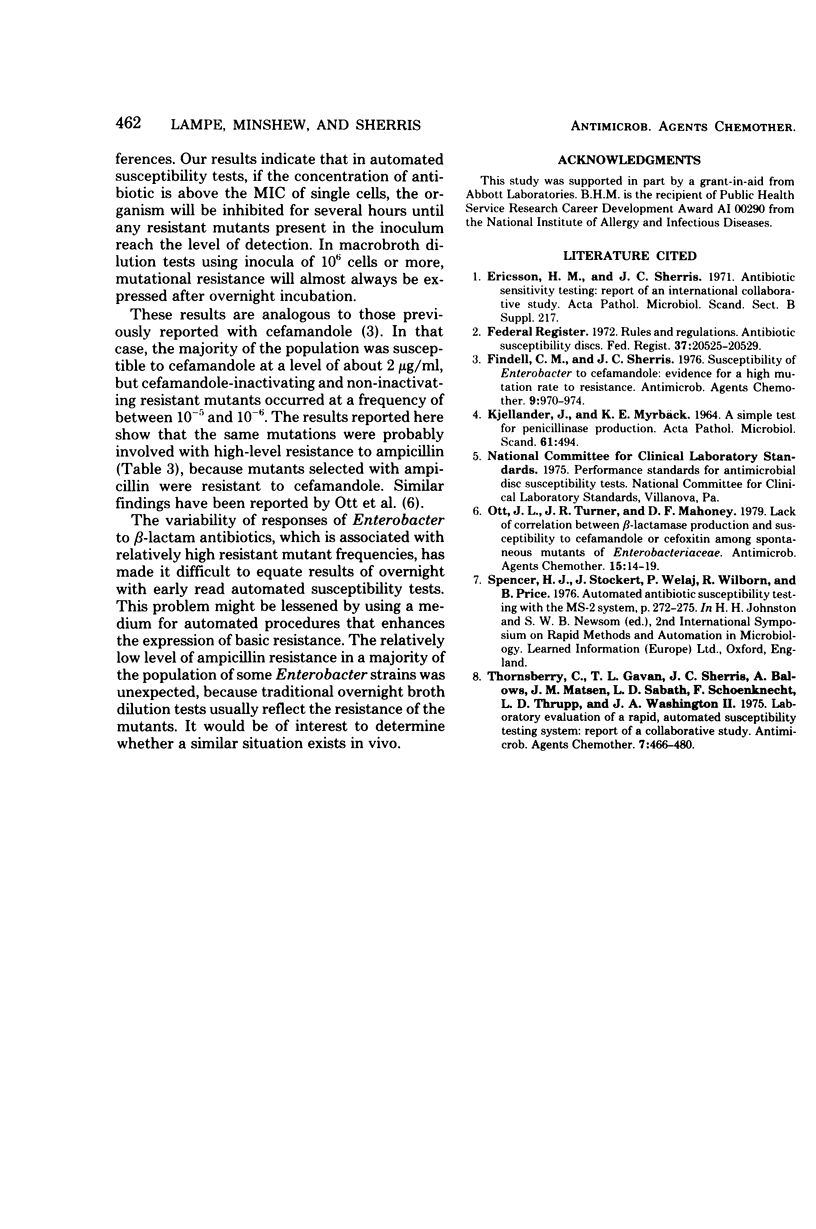
Selected References
These references are in PubMed. This may not be the complete list of references from this article.
- Ericsson H. M., Sherris J. C. Antibiotic sensitivity testing. Report of an international collaborative study. Acta Pathol Microbiol Scand B Microbiol Immunol. 1971;217(Suppl):1+–1+. [PubMed] [Google Scholar]
- Findell C. M., Sherris J. C. Susceptibility of Enterobacter to cefamandole: evidence for a high mutation rate to resistance. Antimicrob Agents Chemother. 1976 Jun;9(6):970–974. doi: 10.1128/aac.9.6.970. [DOI] [PMC free article] [PubMed] [Google Scholar]
- Ott J. L., Turner J. R., Mahoney D. F. Lack of correlation between beta-lactamase production and susceptibility to cefamandole or cefoxitin among spontaneous mutants of Enterobacteriaceae. Antimicrob Agents Chemother. 1979 Jan;15(1):14–19. doi: 10.1128/aac.15.1.14. [DOI] [PMC free article] [PubMed] [Google Scholar]
- Thornsberry C., Gavan T. L., Sherris J. C., Balows A., Matsen J. M., Sabath L. D., Schoenknecht F., Thrupp L. D., Washington J. A., 2nd Laboratory evaluation of a rapid, automatic susceptibility testing system: report of a collaborative study. Antimicrob Agents Chemother. 1975 Apr;7(4):466–480. doi: 10.1128/aac.7.4.466. [DOI] [PMC free article] [PubMed] [Google Scholar]


